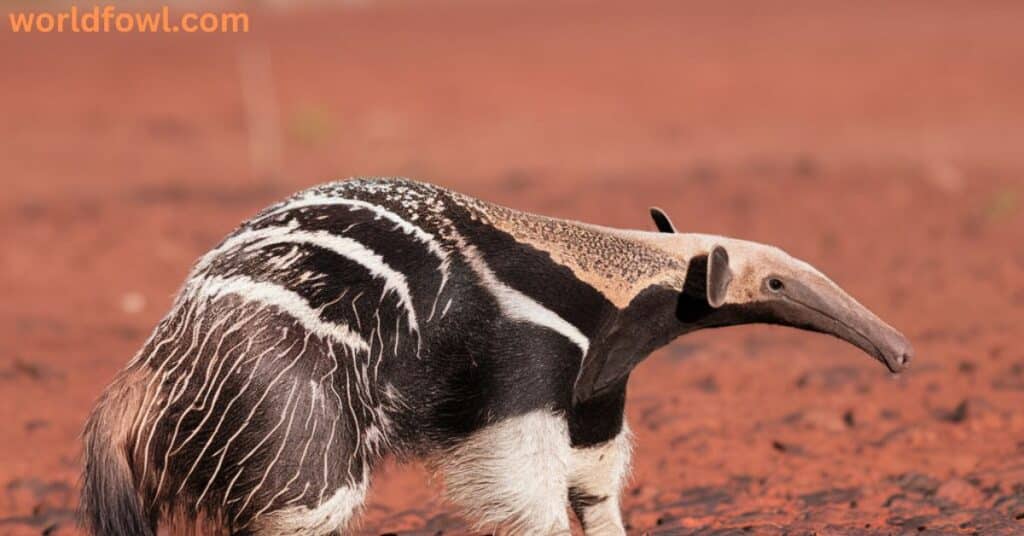When most people think of anteaters, they envision gentle creatures with long snouts and claws, peacefully foraging for ants and termites. Despite their peculiar appearance, anteaters often provoke one significant question in the minds of curious onlookers: Do anteaters attack humans? After all, these animals are equipped with sharp claws and powerful forelimbs—traits that might suggest they could pose a danger to humans. But is this really the case? Are anteaters as dangerous as they look?
In this article, we will take a detailed and thorough look at anteaters, exploring their nature, biology, and interactions with humans. We will also examine the real risks of encountering an anteater in the wild, and provide valuable insights into how these creatures respond when they feel threatened. The goal is to provide a comprehensive understanding of whether anteaters truly pose a threat to humans and what you should do in case of an encounter.
What Are Anteaters?
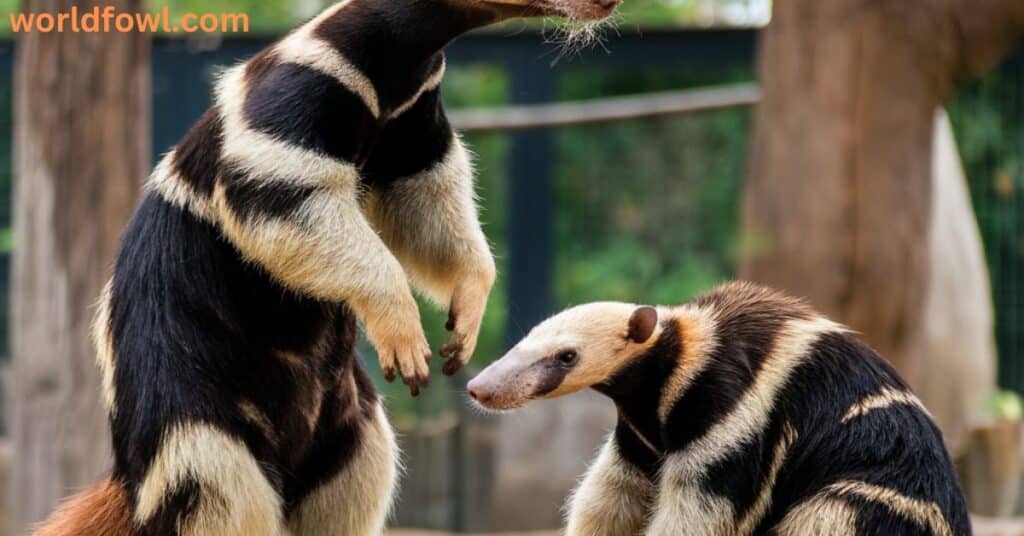
The Anteater Family
Anteaters belong to the scientific family Myrmecophilidae, a group of insectivores primarily found in Central and South America. There are four main species of anteaters: the Giant Anteater, Silky Anteater, Pygmy Anteater, and Tamanduas (Northern and Southern). Despite being a diverse family, all anteaters share a few common features that make them instantly recognizable.
- Giant Anteater: The largest of the species, this anteater can grow up to 8 feet in length, including its bushy tail. It is known for its large body and distinct, long snout, which it uses to slurp up ants and termites.
- Silky Anteater: This tiny anteater, no more than a foot long, has a silken coat and is found mostly in the canopies of rainforests. It’s much smaller than its cousin, the Giant Anteater, but still has a long snout and specialized feeding habits.
- Pygmy Anteater: Also known as the Lesser Anteater, this species is smaller than the Giant Anteater but still has a distinctive long snout and tail. It resides in forests and feeds primarily on ants and termites, similar to other species in the family.
- Tamanduas: These anteaters are more arboreal and adaptable, living both in trees and on the ground. They are known for their more agile nature compared to the Giant Anteater.
Physical Characteristics and Adaptations
Anteaters are fascinating creatures with several adaptations that make them well-suited to their environment:
- Long Snout: The anteater’s elongated snout is its most distinctive feature. This snout is highly specialized, as anteaters do not have teeth but instead use their long, sticky tongue (up to 2 feet long) to slurp up ants and termites from deep inside mounds.
- Powerful Claws: Anteaters have strong, curved claws that can grow up to 4 inches in length. These claws are vital for digging into ant mounds, breaking open termite nests, and for defense against predators. Although anteaters do not use their claws for hunting, they are formidable weapons when used in self-defense.
- Claws and Feet for Digging: Their claws are so strong that they can rip through tough vegetation and dig into hard termite mounds. Despite their sharp claws, anteaters’ primary use for these claws is to access food, not for combat.
- Strong Tail for Balance: The anteater’s long tail provides balance, especially for those species that move on all fours or stand upright to reach higher vegetation or termite mounds.
- Solitary Nature: Anteaters are solitary animals. They prefer to live alone and only come together for mating. This solitary nature means they are typically more reclusive and prefer to avoid human encounters altogether.
Here’s a table summarizing the key information about anteaters:
| Aspect | Details |
|---|---|
| Species | Giant Anteater, Silky Anteater, Pygmy Anteater, Northern & Southern Tamanduas |
| Family | Myrmecophilidae |
| Habitat | Found in Central and South America, including forests, grasslands, and savannas |
| Diet | Insectivores, primarily feeding on ants and termites |
| Physical Features | Long snout, no teeth, sharp claws (up to 4 inches long) for digging, tail for balance |
| Behavior | Solitary, nocturnal, typically avoid confrontation, use claws for defense and foraging |
| Adaptations | Specialized long snout for slurping insects, powerful claws for tearing open insect mounds |
| Reproduction | Mother anteaters care for young for several months, protecting them from potential threats |
This table highlights the essential characteristics of anteaters, summarizing their species, physical traits, and natural habits.
See Also : Do Mongoose Attack Humans? Safety Tips!
Can Anteaters Attack Humans?
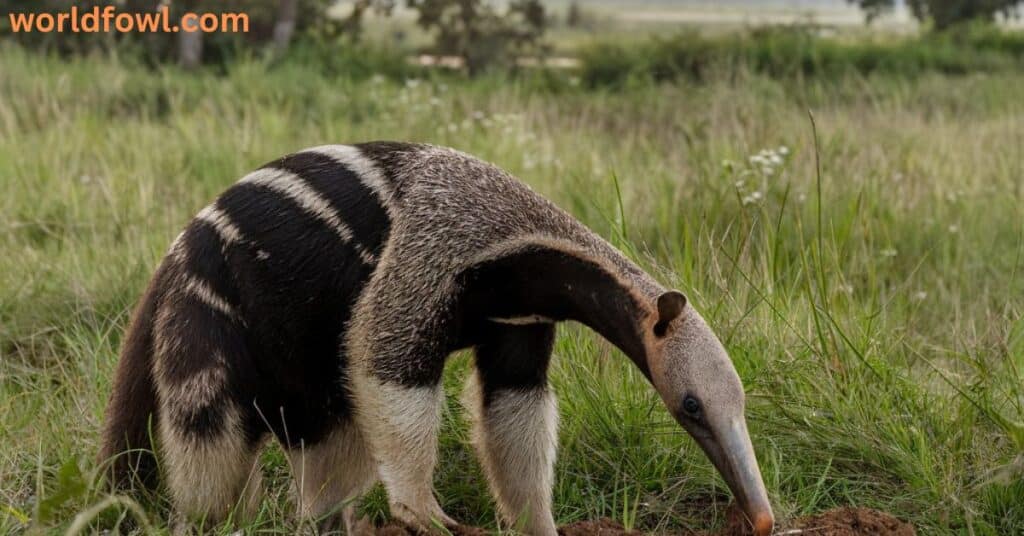
Anteater Attacks: Myth vs. Reality
The short answer to whether anteaters attack humans is no, they do not typically go out of their way to attack people. Anteaters are shy, peaceful creatures that generally avoid human interaction. They are more interested in foraging for ants and termites than seeking out confrontation with humans or other animals.
However, like many animals, anteaters do have a defensive nature. In rare cases, if an anteater feels threatened or cornered, it will use its sharp claws and claws to protect itself. So, while an anteater attack on humans is rare, it is not impossible.
Why Anteaters May Act Defensively
- Defense of Territory: Anteaters are territorial animals, particularly Giant Anteaters, which are solitary and prefer to roam large areas. If they feel that their territory is being invaded, they may become defensive.
- Startled Reactions: Anteaters are naturally shy and often prefer to avoid human contact. However, if an anteater is startled or feels trapped, it may respond aggressively to defend itself. Sudden movements or loud noises may trigger a startled response from the animal.
- Mother Anteaters Protecting Their Young: Just like any animal, a mother anteater will act aggressively if she feels her young are threatened. Mother anteaters are incredibly protective, and in such cases, they may display defensive postures and use their claws to ward off perceived threats.
Defensive Posture and Claw Use
Anteaters do not hunt or seek out human victims. They primarily use their claws for foraging, but when faced with a threat, an anteater will:
- Stand on their hind legs: Anteaters will sometimes stand upright to appear larger and more intimidating to potential threats. This posture allows them to assess the situation and prepare to defend themselves.
- Swing their claws: The anteater’s claws are incredibly strong, and they can deal serious damage if the animal feels threatened. When threatened, the anteater may use its claws to swipe at the intruder, whether human or animal.
- Retreat if possible: Anteaters, being non-aggressive, prefer to retreat if they can. They would rather avoid confrontation than attack.
See Also : Do Bobcats Attack Humans? Uncovering the Risk!
Defensive Nature of Anteaters
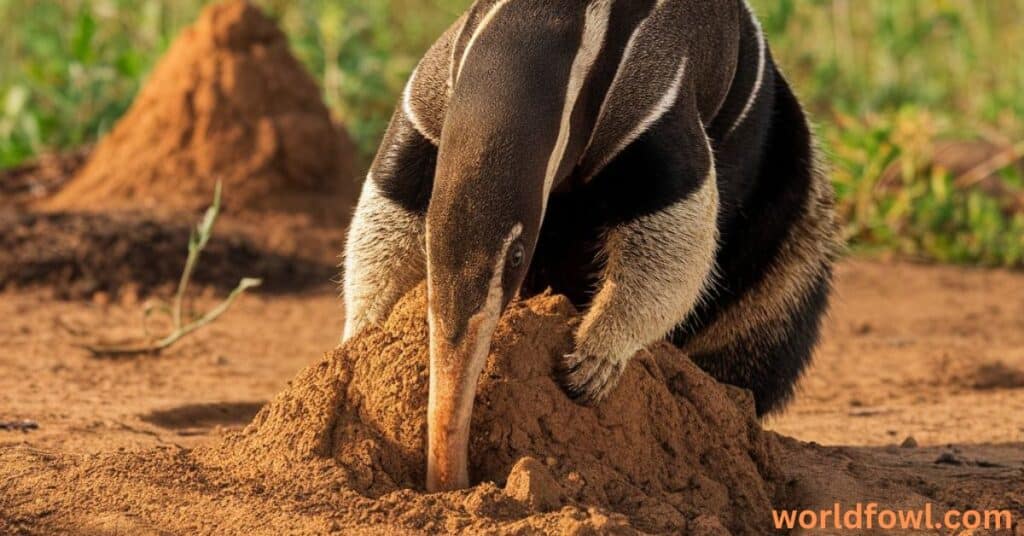
Anteaters are not innately violent, but their defensive nature comes into play when they are in situations where they feel their survival is at risk. Anteaters are equipped with sharp claws and powerful limbs to protect themselves from predators, and they will not hesitate to use them if they feel trapped or endangered.
Anteater’s Defense Mechanisms
- Posturing and Displaying Claws: When confronted, anteaters often stand tall on their hind legs. They might spread their body out to appear larger and use their claws to defend themselves.
- Swiping and Kicking: Anteaters can swipe their claws in a rapid motion, which can cause injury. Their claws are designed to rip apart tough ant mounds, so imagine how damaging they can be to an animal or human if used in a defensive strike.
- Use of Teeth and Tongue: While anteaters do not have visible teeth, their long tongues can reach incredible lengths. They do not use their tongues for defense, but their absence of teeth leaves them reliant on other methods to protect themselves.
See Also : Do Moose Attack Humans? Caught in the Crosshairs!
When Do Anteaters Become Defensive?
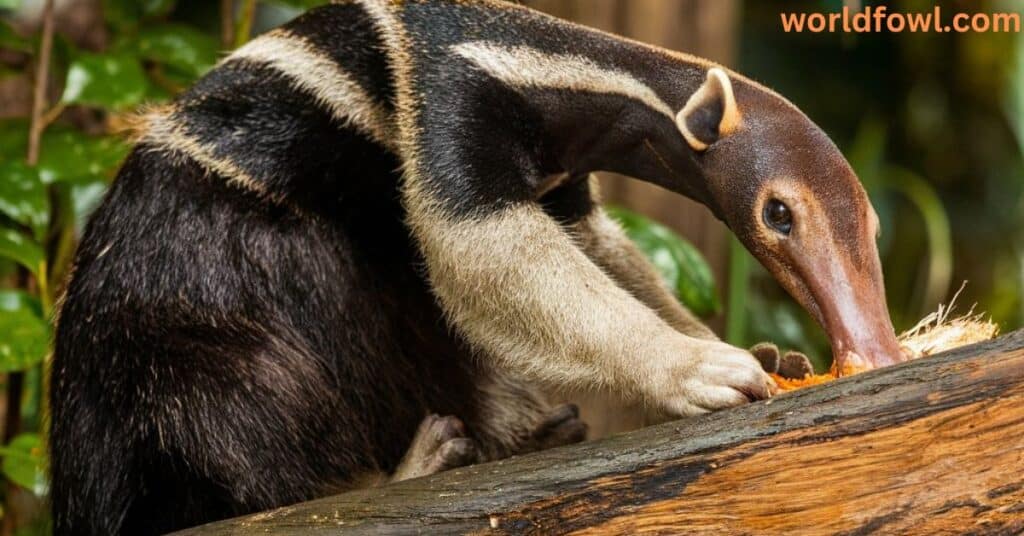
Anteaters, by nature, are very peaceful, but they can act aggressively when they feel there is a genuine threat. Here are the scenarios in which anteaters are more likely to act defensively:
Encroaching on Their Space
Anteaters are territorial animals, especially the Giant Anteater. When their habitat is threatened by human activity or habitat destruction, they may feel cornered or endangered, triggering a defensive response. Anteaters that are encountered in the wild may react if humans come too close to their territory, especially if they’re not accustomed to human presence.
Mother Anteaters with Young
Mother anteaters are incredibly protective of their young. If a mother feels that her baby is in danger, she will go to great lengths to keep it safe, even if it means attacking humans or other animals. Mother anteaters have been known to use their claws in defense of their offspring, especially if the intruder is perceived as a threat.
Startled Anteaters
Anteaters are naturally wary creatures. If approached too quickly or too suddenly, they may react defensively. Startling an anteater may cause it to lash out, as they often have no other way to escape
See Also : Do Capybaras Attack Humans? The Truth!
How Dangerous Are Anteater Claws?
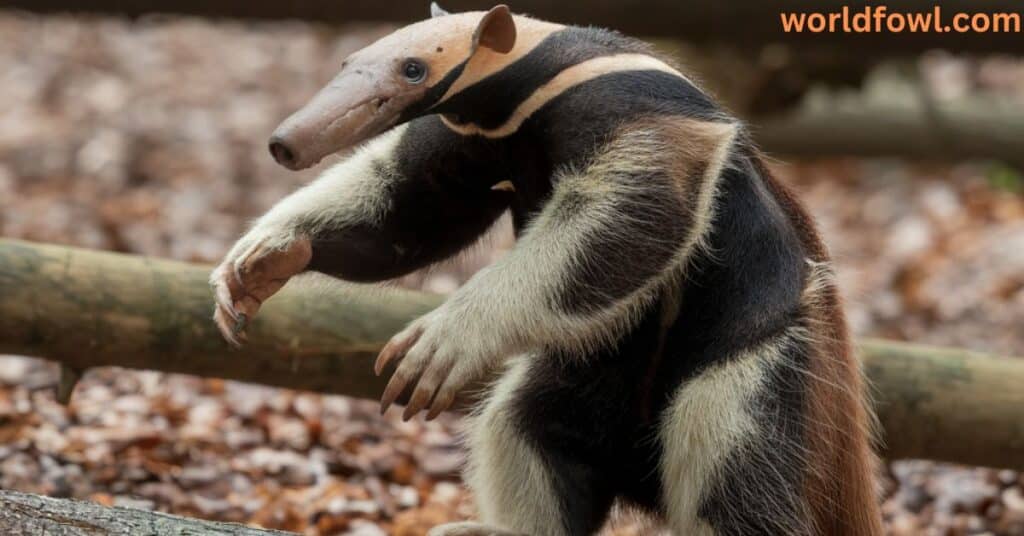
Anteater claws are some of the sharpest and strongest in the animal kingdom, adapted for breaking into ant mounds and for defense. The sharp claws of the anteater are incredibly effective at tearing open insect nests, and when used defensively, they can inflict serious injuries.
Claw Strength
Anteater claws are not simply long, but they are incredibly muscular and strong. A swipe from an anteater can cause deep cuts or injuries to the human body. Their claws are designed to rip through tough materials such as ant mounds, so imagine the damage they can cause if used in a defensive strike.
Danger to Humans
While anteater attacks on humans are rare, an anteater’s claws can be dangerous. If a human gets too close or behaves threateningly, the anteater may strike. However, it’s important to note that attacks are usually defensive and not a sign of inherent aggression.
See Also : Barred Owl Spiritual Meanings and Symbolism
Examples of Human-Anteater Interactions
Case Study 1: Giant Anteater Incident in Brazil
In Brazil, a Giant Anteater was spotted near a group of hikers in a national park. The hikers attempted to approach the animal, but the anteater stood up on its hind legs and displayed its claws. The hikers, recognizing the defensive posture, stopped advancing. While the anteater didn’t strike, the situation showed the importance of maintaining safe distance and respecting wild animals.
Case Study 2: Anteater at a Wildlife Sanctuary
At a wildlife sanctuary, a zoo keeper approached an anteater enclosure without realizing the animal was startled. The anteater, feeling cornered, struck out with its claws. While the keeper suffered minor scratches, the incident highlighted how even in controlled environments, anteaters can react defensively if startled.
See Also : Seeing 3 Crows Spiritual Meaning
Safety Tips for Encountering Anteaters
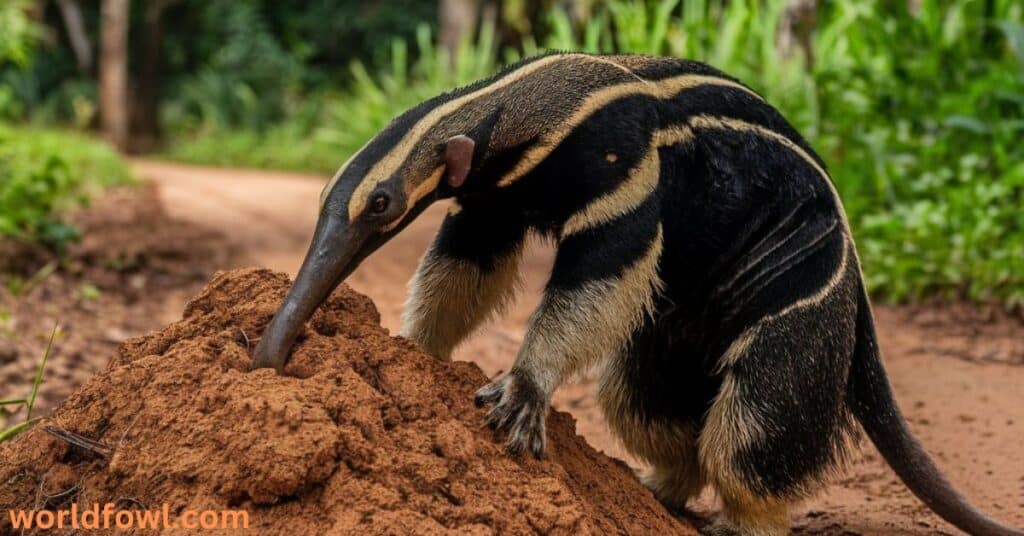
While anteaters are not inherently dangerous, it is important to take certain precautions when encountering them in the wild or in captivity.
Keep Your Distance
Anteaters, like many wildlife species, appreciate their personal space. Keeping a safe distance (at least 20 feet) will ensure that the anteater doesn’t feel threatened or trapped.
Move Slowly and Calmly
If you spot an anteater, avoid sudden movements. Moving slowly and calmly will minimize the risk of startling the animal.
Never Corner an Anteater
Anteaters will react defensively if they feel trapped or threatened. Always ensure that the animal has an escape route if it wishes to flee.
Respect Their Habitat
If you’re in an area where anteaters are known to live, respect their natural habitats. Avoid disrupting their environment and be mindful of your behavior.
Final Verdict: Do Anteaters Attack Humans?
So, do anteaters attack humans? In short: No, anteaters do not typically seek out humans or go out of their way to attack. These creatures are generally peaceful, shy, and solitary animals. Their sharp claws and defensive nature are primarily for self-preservation. However, if they feel threatened, cornered, or startled, anteaters may strike to protect themselves or their young. By respecting their personal space and avoiding startling them, you can safely coexist with these fascinating creatures.
FAQs
Are Anteaters Aggressive? Anteaters are not aggressive animals. They prefer to avoid conflict and generally only use their claws for self-defense.
What Should I Do if I Encounter an Anteater? If you encounter an anteater, remain calm, keep your distance, and avoid sudden movements. Respect the animal’s space and never corner it.
Can Anteaters Kill Humans? Anteaters are unlikely to kill humans. However, their sharp claws can cause serious injury, especially if the animal is startled or feels threatened.
Do Anteaters Attack Other Animals? Anteaters do not hunt or attack other animals. They primarily feed on ants and termites and use their claws only for defense.
Are Anteaters Safe to Keep in Captivity? Anteaters can be kept safely in captivity under the right conditions, but they are solitary and require specialized care.
Conclusion: Do Anteaters Attack Humans?
Anteaters are remarkable creatures with fascinating behaviors and adaptations. While anteater attacks on humans are rare, they are capable of defending themselves when they feel threatened. By respecting their territory and maintaining a safe distance, humans can safely appreciate these incredible animals.

Henry James is a seasoned blogger and a passionate storyteller on “World Fowl.” With years of experience crafting engaging content, he brings a unique blend of expertise and creativity to his writing. Henry specializes in exploring diverse topics with depth and clarity, captivating readers worldwide.

